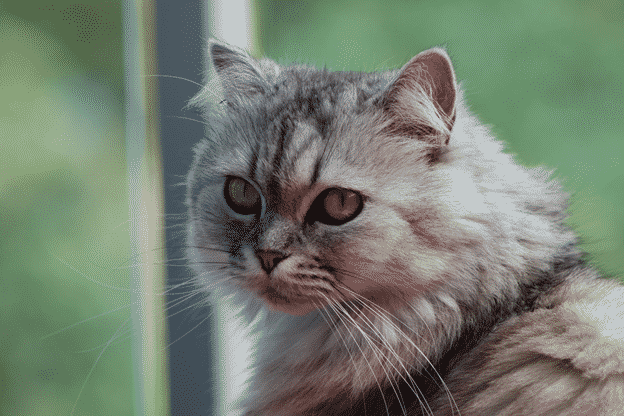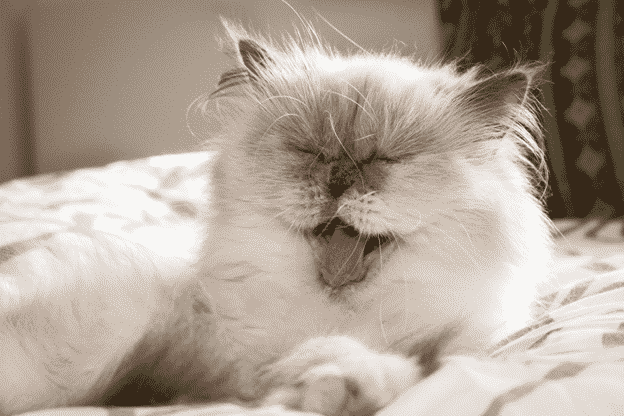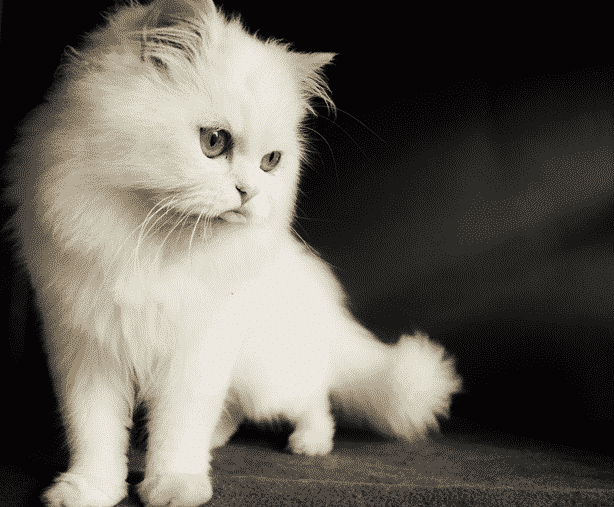

Shedding Problems: Caring for a Persian Cat
Looking for a Persian cat to adopt? Well, there’s no doubt that Persian cats make for great pets. Even though all cats shed, what sets Persian cats apart from the rest of them? Keep reading to find out!
Looking for a Persian cat to adopt?
Well, there’s no doubt that Persian cats make for great pets. With gorgeous coats and a ‘smooshed’ face, you can’t resist this beautiful creature. Not only are Persian cats exceptionally loving and affectionate, but they are also quite the sociable creatures.
The thought of having this furry feline friend by your side might be quite tempting, but at the same time, it also makes you wonder about what it’s going to mean for your home.
Even though all cats shed, what sets Persian cats apart from the rest of them?
Keep reading to find out!
Do Persian Cats Shed?
Yes, Persian cats shed more than any other cat breed, but it is completely normal. Shedding of Persian cats is one of the most common concerns that Persian cat owners have. The fact is that this breed has long-haired fur compared to that of other cats that are typically short-haired.
Even though this cat regularly sheds a lot, it shed even more than normal twice a year, so that it can get a brand new coat during the warm and cold months. This is what keeps these adorable creatures warm and comfortable, but can be quite the menace for you as you’ll have to clean its hair off of – everything!
Even though they shed a lot, Persian cats are still the most loving felines. Another perspective to see this from is that Persian cats losing dead hair actually helps reduce skin irritation, maintaining their overall health. All in all, caring for a Persian cat make require a little more effort that other felines, but is just as rewarding.
Why Does a Persian Cat Shed A lot and How to Manage it?
There may be various reasons behind your Persian cat shedding more than usual. The best thing for you to do is pay attention to a few factors to see what’s influencing the shedding of your feline.
Seasonal Shedding
Like all other furry creatures, Persian cats shed their fur. Even though they shed all year round, you will see a considerable increase in their shedding during specific times of the year. Persian’s shed their fur coat twice a year, which means that you will spot a whole lot of hair around your house during these times.
During the time when your beloved feline is shedding its entire coat, it’s imperative that you brush it consistently and frequently throughout the day. Constantly brushing your cat’s hair during the heavy shedding season will help get rid of majority of the loose hair on its body, and will keep it from moving around on any objects in your home.
You can also give your Persian cat a fresh hair cut to curtail its fur shedding. Not only does your cat losing its hair cause you inconvenience, but it also annoys your cat. By letting your cat’s fur remain unkept during the shedding season, you can lead your kitty into a state of depression. So, your best option is to give your cat a Lion Cut by trimming its hair short, and leaving its head, feet and tail’s tip poofy.
Low Quality Food
Another major reason that your feline may be shedding is because it’s consuming low-quality food. Just like humans, if your cat doesn’t get sufficient nutrients, it won’t be its fittest, causing its normal bodily functions to work below par level. So, if your Persian cat isn’t receiving the right food, the lack of nutrient can cause them to shed more.
When they’re not in the best of health, their body snatches nutrients from their fur to put them at use where they are most required. Poor nutrition is a major cause of excessive shedding and loss of fur. So, whenever you introduce a new diet to your kitty, make sure that you pay attention to its shedding. Otherwise, your beloved Persian’s coat won’t be as lustrous as before.
The best solution to curtail shedding occurring because of low-quality food is to supply your cat with high-quality food that is loaded with nutrient and contains a healthy amount of amino acids.
Fleas, Ticks or Other Insect Infestations
A vital part of caring for a Persian cat is paying attention to any changes in their health. Excessive shedding is one of the most prominent signs that your Persian cat isn’t functioning at its best. Shedding indicates that your cat is experiencing some health issues, which should be alarming for you.
One of the health issues that is associated with shedding is the presence of small creatures such as mites, ticks, fleas and lice in your cat’s environment. Even though these tiny bugs are very common in our daily environment, a Persian cat is quite vulnerable to infestations.
Fleas and ticks are regarded as parasitic insects as they burrow themselves into the skin of any animal, leading to irritation. And, just like when a human fights back when attacked by mosquitoes or other bugs, a cat does the same. Your Persian cat will scratch, itch, or try to bite out the irritation experienced due to an infestation. This itching, scratching, and biting will cause your feline friend to lose more fur than usual. In fact, it can even lead to bald patches in case the infestation gets any worse.
If you witness your cat shedding more than usual apart from the shedding season, you should start checking their coat and skin for any of these tiny insects. Not only do these infestations manifest themselves in the form of sore and bumps on your cat’s face or body, but they also appear in their stool.
You should buy special shampoos and use a fine-toothed metal comb in order to get rid of these parasitic insects to help with the shedding problem.

Allergies
Besides having an insect infestation, another major health issue that can cause excessive shedding in your Persian cat is allergies. Now you’re well-aware that cats shed a lot twice a year due to seasonal changes, which is completely normal. However, if your Persian is shedding out of those times, it may be battling allergies.
Similar to humans, cats also experience season allergies due to pollen, ragweed, and dust mites. This causes them to experience serious skin irritation such as rashes and itchiness, which eventually leads to excessive shedding. If you don’t pay attention to their allergy treatment early on, your cat might even end up getting bald spots.
A good way to relieve your Persian’s allergies is to run a warm, damp cloth of its fur. This will help hydrate their skin and keep irritated skin at bay, especially during warm and dry months. Also, if you notice your cat experiencing seasonal allergies, you should consult a veterinarian to find out the cause of the allergy and how you can help relieve it.
Stress and Anxiety
A Persian cat is quite the sensitive bred that is susceptible to stress and anxiety. Similar to humans, cat’s bodies react different to their environment and surroundings when they’re under stress or duress. Excessive shedding is a major indicator that your cat is experiencing a lot of stress and anxiety.
When a cat experiences a stressful situation, its telogen hair begins shedding. This hair is basically that hair which is present in the resting phase of the growth cycle and are next in line to fall out during the next round of shedding.
If you’re wondering if your cat is losing hair due to stress, you can watch out for some other signs such as hiding or trembling. You can reduce your Persian cat’s stress by making your cat feel comfortable, and you can do this by bringing them their favorite toy, offering them a hiding place, or comforting them in their time of need.
Aging
Aging is another factor that contributes to your Persian’s cat excessive shedding. Older cats move around much less than younger ones, and also aren’t able to groom themselves as well as before.
Generally, when a Persian cat brushes their body against different surfaces, they brush out their fur, grooming most of their body for you so they don’t shed as much. However, an older Persian cat isn’t capable of grooming itself as well as it used to when it was younger. Their inability to groom themselves leads to matted fur, which then leads to a larger part of their hair to shed altogether, leaving behind a huge mess for you to clean.
A good way to deal with caring for a Persian cat that is aging and shedding excessively is to help it out by brushing its fur every day. This will make your feline friend happier and ensure that its coat remains clean and shiny.
Pregnancy
Another reason that your Persian cat may be shedding excessively is that they are pregnancy. When cats are pregnant the experience hormonal changes just like humans, which can cause them to shed more than normal.
Once your Persian cat becomes a mother, it will shed the most from her belly due to the enhanced prominence of her nipples from which she will nurse her new babies. All through the pregnancy process, shedding is the most common during the lactation period.
While you can’t stop your cat from shedding its hair during this stage, you can make it easier for her by grooming her regularly and frequently brushing her coat.
How to Stop a Persian Cat From Shedding?
You can’t tackle many of the reasons that causes shedding in Persian cats. You can’t stop a cat from aging, nor can you stop it from experiencing hormonal issues, but what you can do is try to help in improving the quality of life for your Persian cat through the following techniques.
Brush Your Cat’s Coat Regularly
Even though it may seem counterintuitive, brushing your Persian cat’s coat regularly can help reduce shedding. Regular can mean either once a week or even on a daily basis for long-haired cats. The reason that this helps shedding is because it remove the loose hair before it falls anywhere else in the house.
Bathe Your Cat Once a Month
While bathing won’t help reduce shedding, it will help get rid of dead and loose hair. Although your kitty won’t be too happy about it, but bathing it with an appropriate shampoo will get them cleaner than they can clean themselves. Also, doing this ensures that they lose hair in the bathtub rather than everywhere else in the house.
Change Your Cat’s Diet
A nutrient-deficient diet can increase the chances of your Persian cat shedding its fur. This is why it is vital to ensure that you offer your pet a healthy diet loaded with nutrients. Some of the most important nutrients include Omega 6, Omega 3 fatty acids, and amino acids. You can also consult a veterinarian to see if your Persian’s diet is good enough to maintain its health and reduce hair loss.
Keep Your Cat Hydrated
Water is the key to a lot of things, including your cat’s health! You need to ensure that your cat receives an ample supply of clean drinking water to reduce the chances of dry skin that can increase shedding. The best way to do this is to make sure that your beloved feline has access to clean and fresh water throughout the day.

Caring for a Persian Cat’s Coat
Here are a few ways of caring for a Persian cat to ensure that its coat remains healthy and experiences minimal shedding in the long run.
Start Brushing Your Cat’s Fur at a Young Age
You will have to brush your Persian cat’s coat a lot in order to keep it from shedding excessively in the long run. To make this easier for your cat, you should start brushing its fur at an early age, getting it used to this experience.
If you don’t get your Persian used to brushing at an early age, there is a high chance that it will develop a dislike towards being brushed, making it harder for you to ultimately maintain its coat.
A great way to make it easier for your cat to accept being brushed is to do it right before mealtime. This will cause them to associate getting brushed with getting food.
Get a Comb That Works Well
Caring for a Persian cat isn’t the easiest job; you will need a few accessories that will help cater to your pet’s needs. Considering your Persian’s long fur, you will need a special metal comb that has wide-spaced teeth on one end and narrow teeth on another. This will help you untangle your cat’s long fur easily.
Brush Your Cat’s Fur Every Day
Even though brushing fur isn’t that big of a deal, the luxuriously long fur of a Persian cat can become a problem quite quickly. When your Persian’s fur gets tangled, it leads to matting. These tangled clumps of fur tug at your kitty’s skin, which is a very unpleasant experience for them.
Tangled fur also increases the chances of your cat of developing various skin infections. Moreover, if your cat’s fur remains matted for long, it will become much harder for your feline to clean the skin beneath the fur.
See a Professional Groomer
Your Persian cat’s fur can matt for various reasons, with the main one being lack of brushing. Also, when your cat gets older or gains more weight, they become less-efficient in self-grooming, making them less able to care from themselves. It will lead to matted and tangled fur.
The best option is to look for a professional groomer in case you can’t deal with your Persian’s matted fur. Since a groomer has a lot of experience, they can help get rid of the matted areas and groom your pet properly.
Conclusion
Some cat breeds shed more than others, Persian cats being the breed that shed the most. Cats with longer hair naturally shed more than those with shorter hair. Therefore, with the long hair that Persian cats have, it’s normal that they shed more.
Even though it’s common for Persian cats to shed more than other breeds, you still need to keep an eye on how much your cat sheds on a daily basis. This will help give you an idea of how much shedding is normal, making you more aware when your cat is shedding more than normal.
Caring for a Persian cat can be difficult sometimes, but recognizing the signs and catering to their excessive shedding will ensure that your pet leads a happier and healthier life!
Discover how to create a joyful, healthy home for your pet.
Subscribe to your weekly rundown of practice, real life ideas and training tips straight to your inbox.


